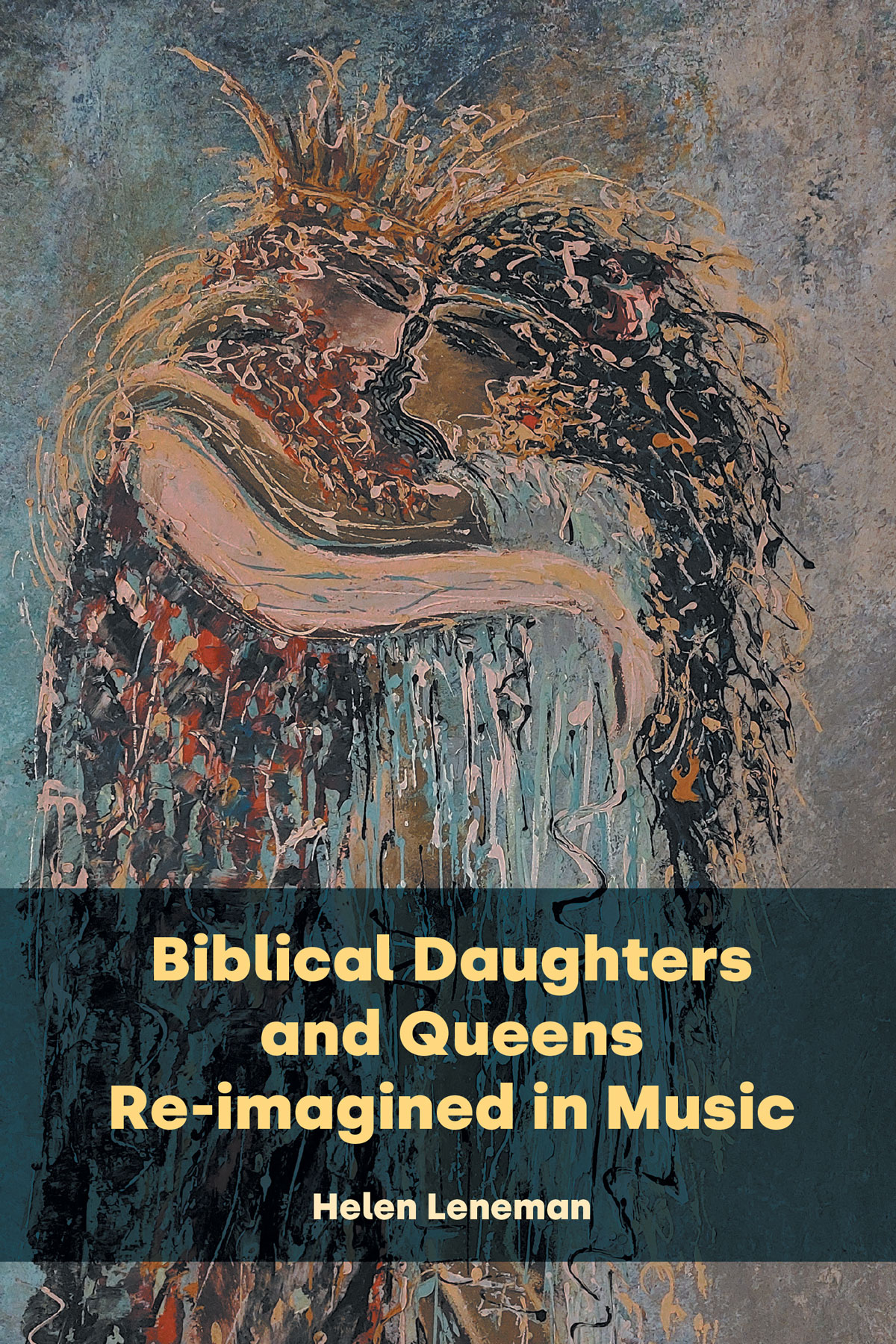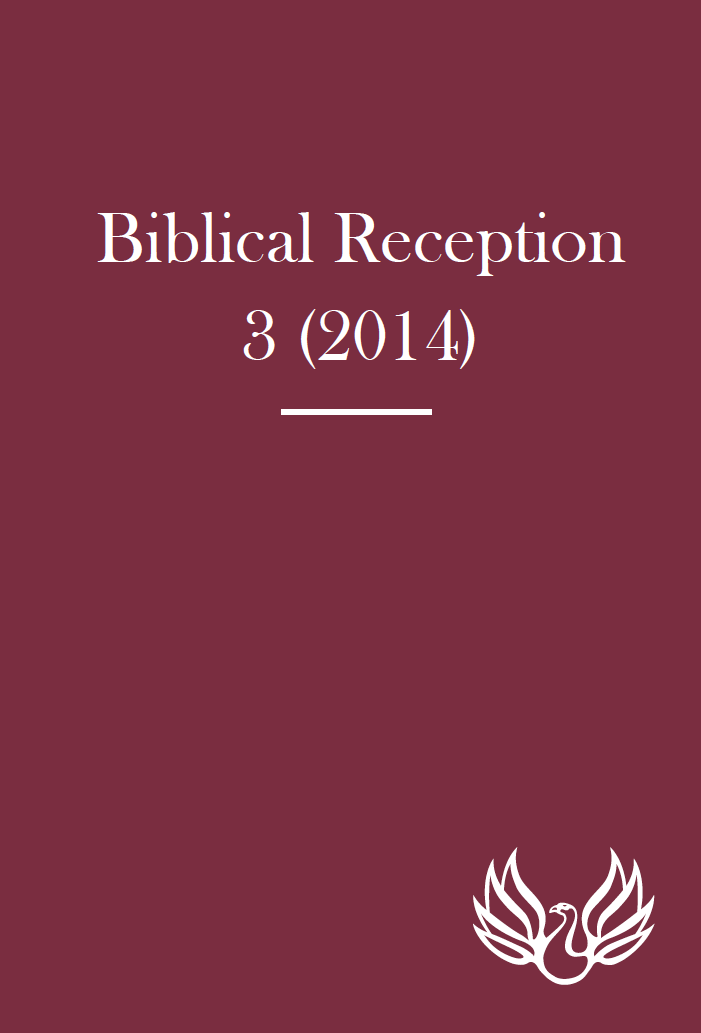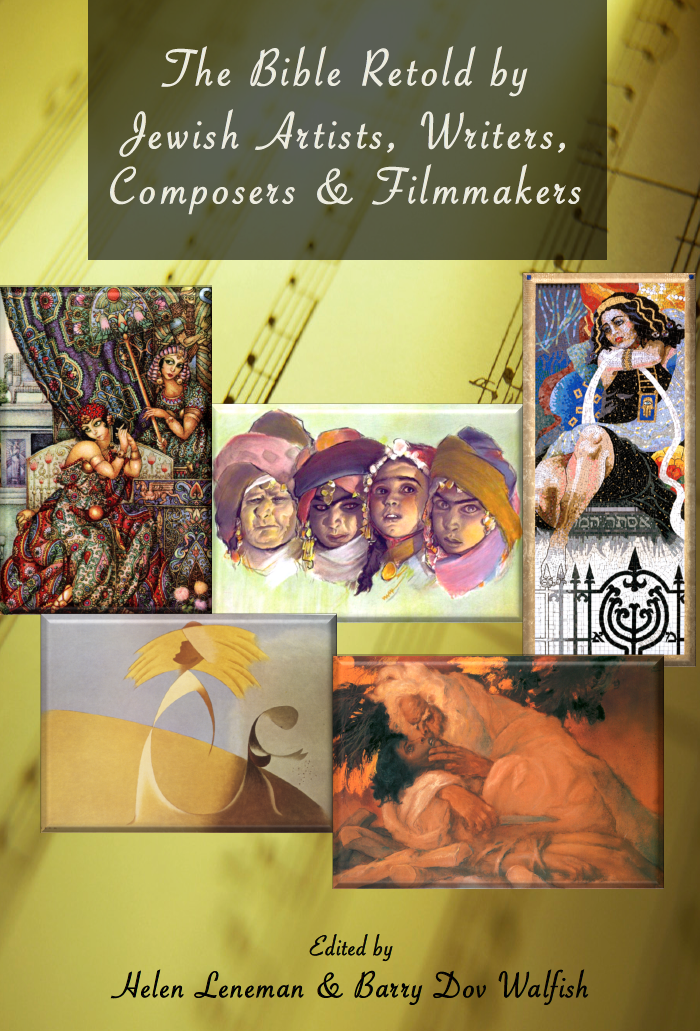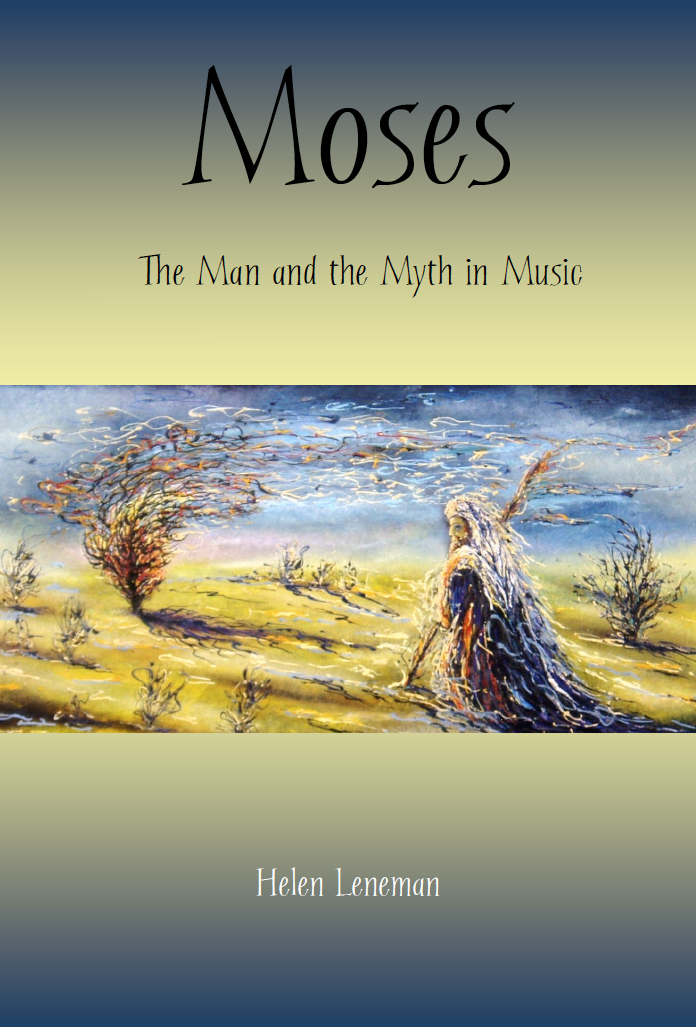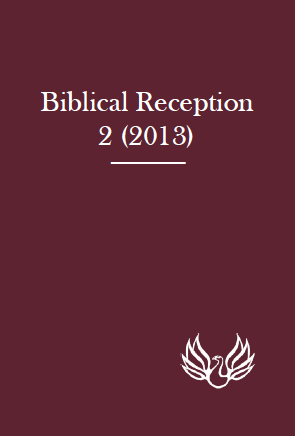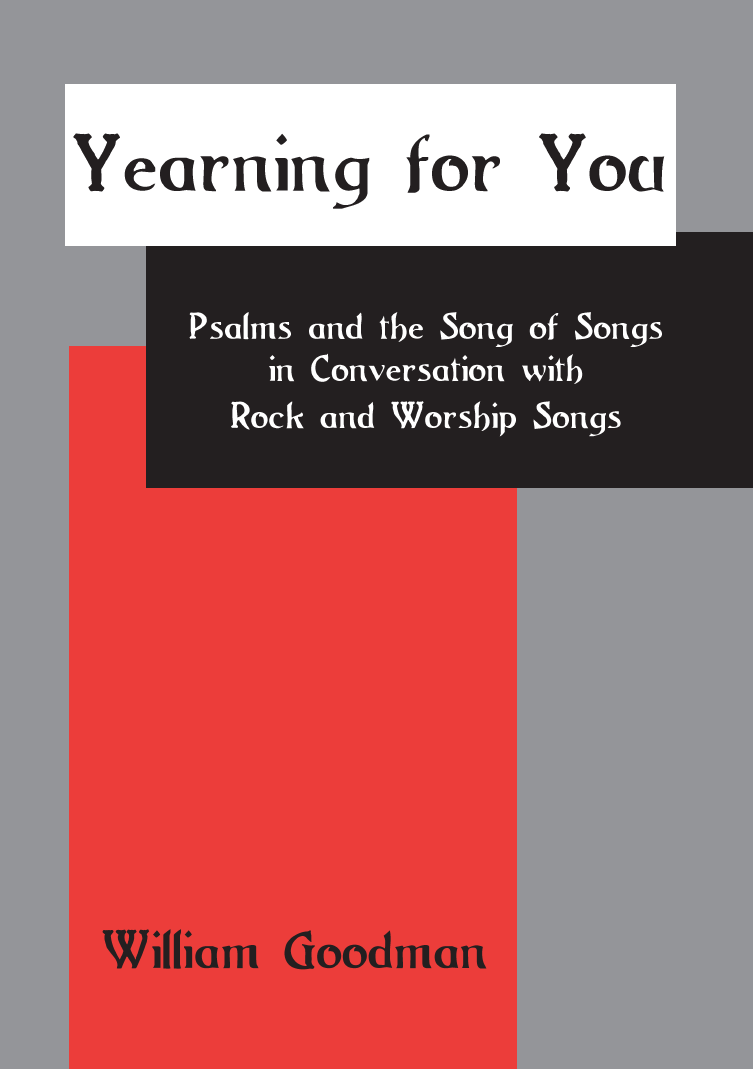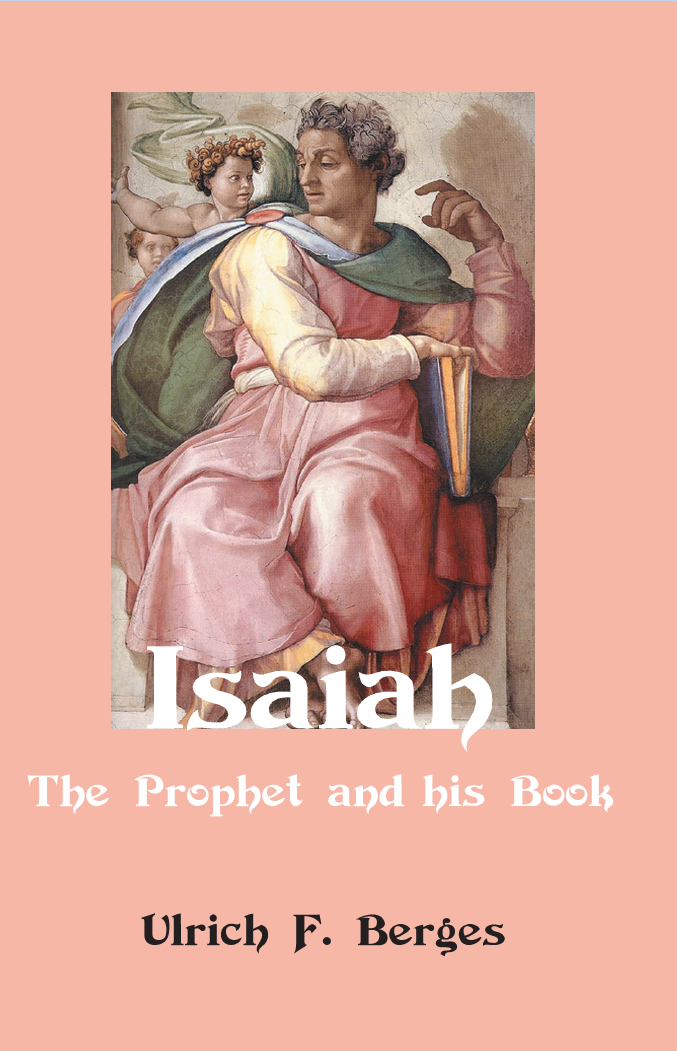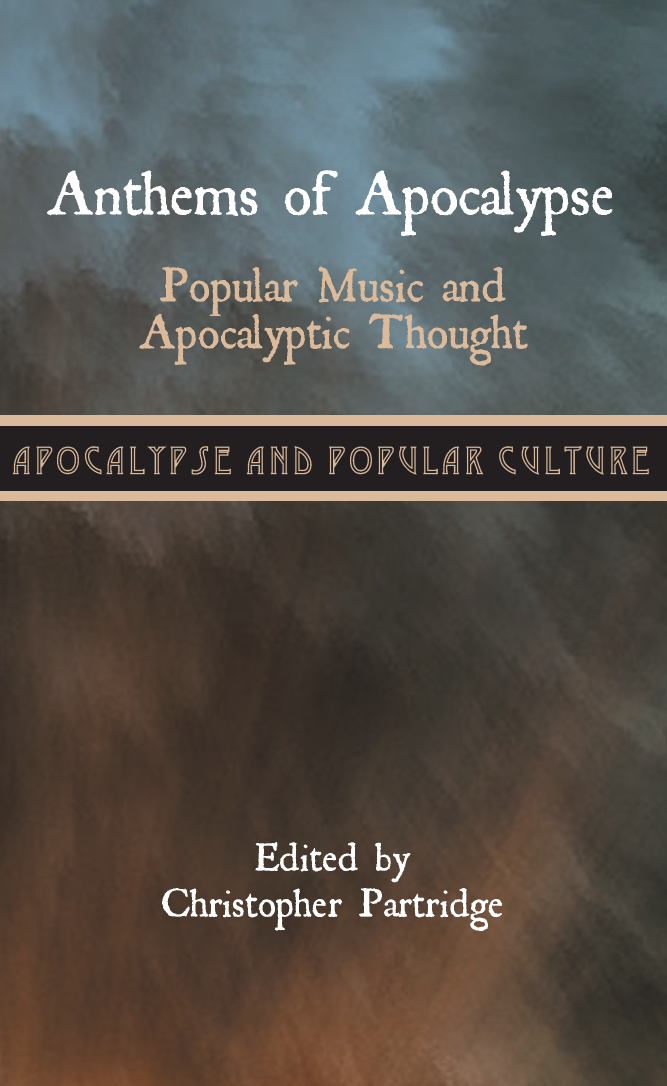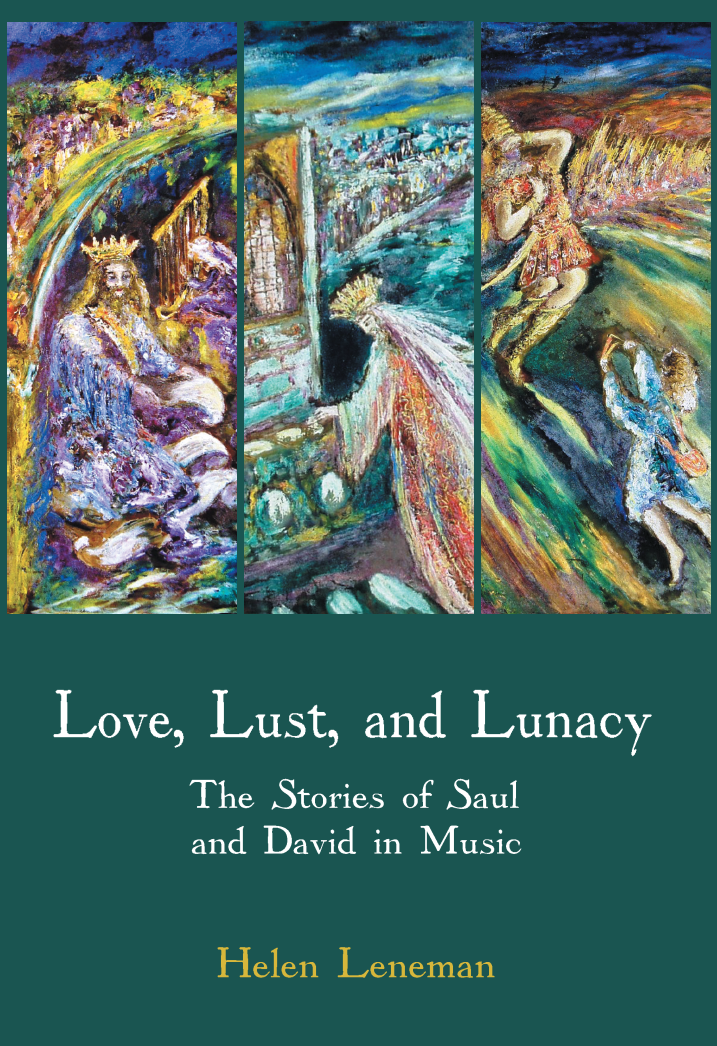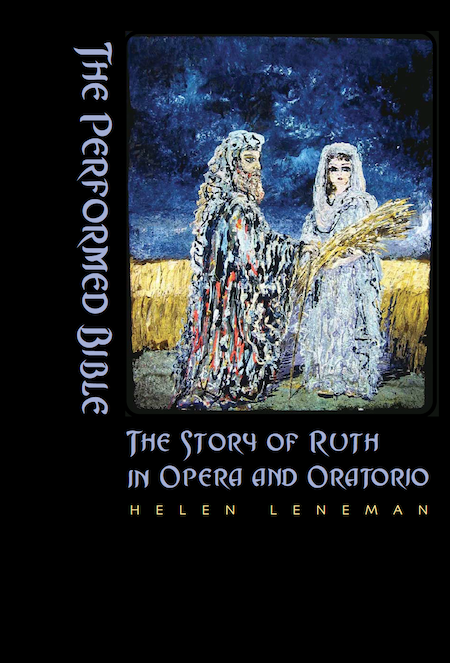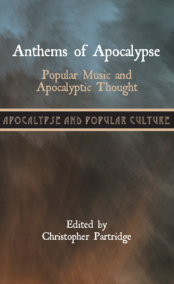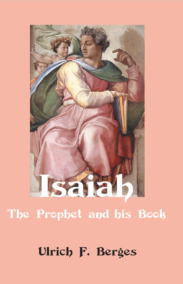Song of Songs in Sense, Sound and Space
Published: Nov 2024
£70.00
This volume offers 13 cutting-edge essays on the Song of Songs presented in four categories.
1. Exegetical and Contextualised Studies. Fernandes argues Solomon’s sidelining in the Song is unjust and uncovers subtle allusions to him. Scheffler examines the contentious place of Song 7.1 and its depiction. Lombaard challenges whether gender equity exists in the Song, arguing that female voices are more prominent than male ones. Landy employs affect theory to the depiction of the woman as a mare (1.9-11) and the invitation for her to return (7.1). Kim highlights the subjectivity of interpretation by comparing readings of Song 7 by Keel, Black and herself through the lens of Umberto Eco’s semiotic model. Potgieter and Lombaard contemporise Paul Decock’s readings of Origen and Bernard on the Song.
2. Spatial Studies. Fischer applies Lefebvre’s spatial theory to the Song, highlighting the protagonists’ physical space; their conceived (cultural) space; and their lived space (their supra-temporal experience). Dantonel analyses several spatial domains in both the Song and Proverbs: spring; well; and vineyard along with three places of enduring love: mother’s house; door; and window.
3. Comparative Studies. Volkonski compares Early Arabic poetic techniques and the Song to show new possibilities for interpreting the latter. Recalcati investigates parallels between the Song and Hellenistic epigrammatic poetry within the Anthologia Palatina. Biermann explores the metaphor(s) ‘set me as a seal upon your heart, as a seal upon your arm’ in 8.6 through cognitive linguistics and sensory archaeology.
4. Studies in Music. Boyce-Tillman integrates her reading of the Song with her musical compositions to contemporise themes including fertility, the body, ecotheology, and apophatic theology. Lamont and Fernandes survey four shared tropes between Arvo Pärt’s The Deer’s Cry, St. Patrick’s Breastplate and the Song: love and war; incantation and magic; connection with nature; and in medias res.
Song of Songs in Sense, Sound and Space
£70.00
This volume offers 13 cutting-edge essays on the Song of Songs presented in four categories.
1. Exegetical and Contextualised Studies. Fernandes argues Solomon’s sidelining in the Song is unjust and uncovers subtle allusions to him. Scheffler examines the contentious place of Song 7.1 and its depiction. Lombaard challenges whether gender equity exists in the Song, arguing that female voices are more prominent than male ones. Landy employs affect theory to the depiction of the woman as a mare (1.9-11) and the invitation for her to return (7.1). Kim highlights the subjectivity of interpretation by comparing readings of Song 7 by Keel, Black and herself through the lens of Umberto Eco’s semiotic model. Potgieter and Lombaard contemporise Paul Decock’s readings of Origen and Bernard on the Song.
2. Spatial Studies. Fischer applies Lefebvre’s spatial theory to the Song, highlighting the protagonists’ physical space; their conceived (cultural) space; and their lived space (their supra-temporal experience). Dantonel analyses several spatial domains in both the Song and Proverbs: spring; well; and vineyard along with three places of enduring love: mother’s house; door; and window.
3. Comparative Studies. Volkonski compares Early Arabic poetic techniques and the Song to show new possibilities for interpreting the latter. Recalcati investigates parallels between the Song and Hellenistic epigrammatic poetry within the Anthologia Palatina. Biermann explores the metaphor(s) ‘set me as a seal upon your heart, as a seal upon your arm’ in 8.6 through cognitive linguistics and sensory archaeology.
4. Studies in Music. Boyce-Tillman integrates her reading of the Song with her musical compositions to contemporise themes including fertility, the body, ecotheology, and apophatic theology. Lamont and Fernandes survey four shared tropes between Arvo Pärt’s The Deer’s Cry, St. Patrick’s Breastplate and the Song: love and war; incantation and magic; connection with nature; and in medias res.
Biblical Daughters and Queens Re-imagined in Music
Published: Jun 2024
£74.00
In Biblical Daughters and Queens, Helen Leneman continues her sustained approach to biblical reception in music traversing several centuries. She offers a immersive reading of two types of biblical women—daughters and queens—in a wide range of musical representations spanning over 300 years (1648-1993). Music, as Leneman highlights, goes beyond words: music expresses how feelings sound. Leneman’s unique analysis shares the ways in which these women’s stories have been altered, their emotions imagined and amplified.
The stories of two daughters are explored: the tragedy of Jephthah’s daughter (Judges 11); and the Apocryphal story of Susannah. The tragedy of Jephthah’s daughter seems to have been of greater interest to early composers, with most works, whether oratorios or operas, dating to pre-20th century. Susanna was a lesser-known story yet was treated both in two early oratorios and, unusually, in an operatic retelling of the story from the mid-20th century.
Queens included are Sheba (1 Kings), Athalia (2 Kings), and Esther (Book of Esther). In general, the Queen of Sheba has not been re-imagined with much nuance in musical works, mostly depicted as a sexy siren (though not always). Esther is the most popular queen for musical retellings, featured in no fewer than nine works in this volume. An interesting discovery was an eighteenth-century oratorio with a Hebrew libretto. Athalia is the least known of the three but Handel thought she was worth an oratorio (he is well represented throughout the book).
In previous volumes Leneman has considered the biblical reception in music of Moses and Miriam in Exodus; David, Saul and Bathsheba in the Book of Kings; Ruth and Naomi in the Book of Ruth; and Judith in the Book of Judith. Leneman also discussed the varied biblical characters in the Book of Genesis.
This volume encourages an experiential approach, to enable the reader, and listener to hear and feel these women’s stories as never before. Links to the musical works are provided throughout. Each setting is filled with both text and music that will inspire the listener to return to the original story with a new and different understanding.
Biblical Daughters and Queens Re-imagined in Music
£74.00
In Biblical Daughters and Queens, Helen Leneman continues her sustained approach to biblical reception in music traversing several centuries. She offers a immersive reading of two types of biblical women—daughters and queens—in a wide range of musical representations spanning over 300 years (1648-1993). Music, as Leneman highlights, goes beyond words: music expresses how feelings sound. Leneman’s unique analysis shares the ways in which these women’s stories have been altered, their emotions imagined and amplified.
The stories of two daughters are explored: the tragedy of Jephthah’s daughter (Judges 11); and the Apocryphal story of Susannah. The tragedy of Jephthah’s daughter seems to have been of greater interest to early composers, with most works, whether oratorios or operas, dating to pre-20th century. Susanna was a lesser-known story yet was treated both in two early oratorios and, unusually, in an operatic retelling of the story from the mid-20th century.
Queens included are Sheba (1 Kings), Athalia (2 Kings), and Esther (Book of Esther). In general, the Queen of Sheba has not been re-imagined with much nuance in musical works, mostly depicted as a sexy siren (though not always). Esther is the most popular queen for musical retellings, featured in no fewer than nine works in this volume. An interesting discovery was an eighteenth-century oratorio with a Hebrew libretto. Athalia is the least known of the three but Handel thought she was worth an oratorio (he is well represented throughout the book).
In previous volumes Leneman has considered the biblical reception in music of Moses and Miriam in Exodus; David, Saul and Bathsheba in the Book of Kings; Ruth and Naomi in the Book of Ruth; and Judith in the Book of Judith. Leneman also discussed the varied biblical characters in the Book of Genesis.
This volume encourages an experiential approach, to enable the reader, and listener to hear and feel these women’s stories as never before. Links to the musical works are provided throughout. Each setting is filled with both text and music that will inspire the listener to return to the original story with a new and different understanding.
Biblical Reception 3 (2014)
Published: Oct 2015
£80.00
This is the third volume of the journal, Biblical Reception (BibRec), published in November 2013. When we founded the journal our policy was this: it was high time, we believed, for the new and burgeoning field of the reception of the Bible to have a publication medium of its own. What the biblical text has meant to its readers down the centuries should be as much the subject of scholarly attention as any 'original' meaning. Our journal was a substantial annual volume covering all kinds of use of the Bible — in art, literature, music, film and popular culture, as well as in the history of interpretation.
Editorial Board Diane Apostolos-Cappadona (Washington, DC), Alan Cooper (New York), James Crossley (Sheffield), Andrew Davies (Birmingham), Tamara C. Eskenazi (Los Angeles), Philip Esler (Gloucester), Susanne Gillmayr-Bucher (Linz), John Harvey (Aberystwyth), Christine Joynes (Oxford), Carol Newsom (Atlanta), Martin O'Kane (Lampeter), Tina Pippin (Decatur, GA), John F.A. Sawyer (Durham), Reinhold Zwick (Münster).
Biblical Reception 3 (2014)
£80.00
This is the third volume of the journal, Biblical Reception (BibRec), published in November 2013. When we founded the journal our policy was this: it was high time, we believed, for the new and burgeoning field of the reception of the Bible to have a publication medium of its own. What the biblical text has meant to its readers down the centuries should be as much the subject of scholarly attention as any 'original' meaning. Our journal was a substantial annual volume covering all kinds of use of the Bible — in art, literature, music, film and popular culture, as well as in the history of interpretation.
Editorial Board Diane Apostolos-Cappadona (Washington, DC), Alan Cooper (New York), James Crossley (Sheffield), Andrew Davies (Birmingham), Tamara C. Eskenazi (Los Angeles), Philip Esler (Gloucester), Susanne Gillmayr-Bucher (Linz), John Harvey (Aberystwyth), Christine Joynes (Oxford), Carol Newsom (Atlanta), Martin O'Kane (Lampeter), Tina Pippin (Decatur, GA), John F.A. Sawyer (Durham), Reinhold Zwick (Münster).
The Bible Retold by Jewish Artists, Writers, Composers and Filmmakers
Published: Oct 2015
£60.00
Helen Leneman and Barry Dov Walfish, both specialists in biblical reception history, have compiled an unusually rich collection of new essays by experts in their fields. This book is a pioneering attempt to portray and analyse the visions of twentieth- and twenty-first century Jewish artists working in different media —visual art, literature (novels, poetry and short stories), music (opera, oratorio and song), and film —who have retold biblical narratives through their art. Reading these essays together will bring a new appreciation and understanding of what makes the perspective of these visual artists, writers, composers and filmmakers on the Hebrew Bible uniquely Jewish.
All of these Jewish visions can be considered a form of modern midrash, as the artists imaginatively fill in gaps in the biblical narrative, bringing a modern sensibility to the meanings of the stories.
Under the heading 'Biblical Women', the stories of the matriarchs, Hagar, and other biblical women are re-imagined in the visual arts, poetry and music. Several further chapters focus on the story of the Aqedah (Binding of Isaac), as represented in the visual arts, literature and music. Other retellings of biblical narratives through short stories are then examined, while yet other chapters explore the books of Esther and Psalms as envisioned and retold in the visual arts, opera, literature and film.
These retellings, analysed and discussed by the authors of this ground-breaking volume, will stimulate the reader to view the texts in new ways or to confront their challenge to personal or traditional interpretations of those texts.
The Bible Retold by Jewish Artists, Writers, Composers and Filmmakers
£60.00
Helen Leneman and Barry Dov Walfish, both specialists in biblical reception history, have compiled an unusually rich collection of new essays by experts in their fields. This book is a pioneering attempt to portray and analyse the visions of twentieth- and twenty-first century Jewish artists working in different media —visual art, literature (novels, poetry and short stories), music (opera, oratorio and song), and film —who have retold biblical narratives through their art. Reading these essays together will bring a new appreciation and understanding of what makes the perspective of these visual artists, writers, composers and filmmakers on the Hebrew Bible uniquely Jewish.
All of these Jewish visions can be considered a form of modern midrash, as the artists imaginatively fill in gaps in the biblical narrative, bringing a modern sensibility to the meanings of the stories.
Under the heading 'Biblical Women', the stories of the matriarchs, Hagar, and other biblical women are re-imagined in the visual arts, poetry and music. Several further chapters focus on the story of the Aqedah (Binding of Isaac), as represented in the visual arts, literature and music. Other retellings of biblical narratives through short stories are then examined, while yet other chapters explore the books of Esther and Psalms as envisioned and retold in the visual arts, opera, literature and film.
These retellings, analysed and discussed by the authors of this ground-breaking volume, will stimulate the reader to view the texts in new ways or to confront their challenge to personal or traditional interpretations of those texts.
Moses: The Man and the Myth in Music
Published: July 2014
£50.00
With this book, Leneman completes a trilogy on musical interpretations of biblical narratives. Her previous books were Love, Lust, and Lunacy: The Stories of Saul and David in Music (2010) and The Performed Bible: The Story of Ruth in Opera and Oratorio (2007).
Moses has often been thought of more as a myth than as a man. Later retellings of his story —particularly in operas and oratorios —demythologize him, portraying him and all the characters surrounding him on a more human scale. Moses the statue comes down from his pedestal and becomes a living man. For example, in the Bible the primary relationship of Moses is with God; secondarily it is with the people of Israel, rather than with individuals. In opera and the many oratorio settings the figure of Moses is enhanced by his representation as a man with many emotional ties —to Zipporah, Miriam or Aaron, or to all three.
Re-reading and re-telling biblical narratives through musical settings gives voice to often silent biblical characters, offering the reader and listener unexpected ways to hear and understand their story. In Moses: The Man and the Myth in Music, highlighting how Moses was richly imagined in oratorios and operas, Leneman discusses 16 operas and oratorios from the eighteenth to the twentieth century —including works by Handel, Rossini, Saint-Saëns, Massenet, Schoenberg and more obscure composers whose music has seldom or never been explored.
Through music, the listener can hear and also feel the suffering of the Israelites; the passion of Moses as leader, liberator, and even lover; the intensity of Miriam's vision and commitment; and the whole range of emotion experienced by every character that inhabits this story. The music and librettos not only fill in the spaces between the lines, but go beyond the margins of the biblical text to conjure up a multi-dimensional world.
Moses: The Man and the Myth in Music
£50.00
With this book, Leneman completes a trilogy on musical interpretations of biblical narratives. Her previous books were Love, Lust, and Lunacy: The Stories of Saul and David in Music (2010) and The Performed Bible: The Story of Ruth in Opera and Oratorio (2007).
Moses has often been thought of more as a myth than as a man. Later retellings of his story —particularly in operas and oratorios —demythologize him, portraying him and all the characters surrounding him on a more human scale. Moses the statue comes down from his pedestal and becomes a living man. For example, in the Bible the primary relationship of Moses is with God; secondarily it is with the people of Israel, rather than with individuals. In opera and the many oratorio settings the figure of Moses is enhanced by his representation as a man with many emotional ties —to Zipporah, Miriam or Aaron, or to all three.
Re-reading and re-telling biblical narratives through musical settings gives voice to often silent biblical characters, offering the reader and listener unexpected ways to hear and understand their story. In Moses: The Man and the Myth in Music, highlighting how Moses was richly imagined in oratorios and operas, Leneman discusses 16 operas and oratorios from the eighteenth to the twentieth century —including works by Handel, Rossini, Saint-Saëns, Massenet, Schoenberg and more obscure composers whose music has seldom or never been explored.
Through music, the listener can hear and also feel the suffering of the Israelites; the passion of Moses as leader, liberator, and even lover; the intensity of Miriam's vision and commitment; and the whole range of emotion experienced by every character that inhabits this story. The music and librettos not only fill in the spaces between the lines, but go beyond the margins of the biblical text to conjure up a multi-dimensional world.
The Sacrifice of Isaac: The Reception of a Biblical Story in Music
Published: Aug 2013
£60.00
The biblical story of the sacrifice of Isaac (Genesis 22), or the Akedah in Hebrew tradition, has inspired composers, artists, writers, and dramatists down through the centuries to produce some of the greatest musical, artistic, literary, and dramatic masterpieces the world knows today. This book explores the reception of Genesis 22 in five compositions that not only have been influential in the history of classical art music but also present some of the most insightful and distinctive interpretations of the biblical story. Spanning more than four hundred years, and stemming from a variety of musical genres, the works selected include an oratorio latino by Giacomo Carissimi, the 'Father of Oratorio'; an oratorio volgare by the Bohemian Josef Mysliveček; a canticle, and a movement from the War Requiem of the eminent British composer Benjamin Britten; and a cantata by the Jewish American composer Judith Lang Zaimont.
Dowling Long argues that, despite intensive exegetical work on Genesis 22 and the attention given to the concept of seeing in the narrative, biblical commentators have generally neglected the concept of hearing, which features prominently in the story's reception in music.
This book will be of interest to biblical scholars, musicologists, teachers of religious education and music education, as well as to readers interested in reception history. It is beautifully illustrated with 80 images of the sacrifice of Isaac in art, stone, needlework of tapestry and embroidery, and furniture together with photographs of composers and 86 musical excerpts.
The Sacrifice of Isaac: The Reception of a Biblical Story in Music
£60.00
The biblical story of the sacrifice of Isaac (Genesis 22), or the Akedah in Hebrew tradition, has inspired composers, artists, writers, and dramatists down through the centuries to produce some of the greatest musical, artistic, literary, and dramatic masterpieces the world knows today. This book explores the reception of Genesis 22 in five compositions that not only have been influential in the history of classical art music but also present some of the most insightful and distinctive interpretations of the biblical story. Spanning more than four hundred years, and stemming from a variety of musical genres, the works selected include an oratorio latino by Giacomo Carissimi, the 'Father of Oratorio'; an oratorio volgare by the Bohemian Josef Mysliveček; a canticle, and a movement from the War Requiem of the eminent British composer Benjamin Britten; and a cantata by the Jewish American composer Judith Lang Zaimont.
Dowling Long argues that, despite intensive exegetical work on Genesis 22 and the attention given to the concept of seeing in the narrative, biblical commentators have generally neglected the concept of hearing, which features prominently in the story's reception in music.
This book will be of interest to biblical scholars, musicologists, teachers of religious education and music education, as well as to readers interested in reception history. It is beautifully illustrated with 80 images of the sacrifice of Isaac in art, stone, needlework of tapestry and embroidery, and furniture together with photographs of composers and 86 musical excerpts.
Biblical Reception 2
Published: Oct 2012
£80.00
This is the second volume of the new journal, Biblical Reception (BibRec), published in November 2013. For the first volume, click here.
Our policy for the journal is this. It is high time, we believe, for the new and burgeoning field of the reception of the Bible to have a publication medium of its own. What the biblical text has meant to its readers down the centuries should be as much the subject of scholarly attention as any 'original' meaning.
Our journal is a substantial annual volume covering all kinds of use of the Bible — in art, literature, music, film and popular culture, as well as in the history of interpretation.
Biblical Reception 2
£80.00
This is the second volume of the new journal, Biblical Reception (BibRec), published in November 2013. For the first volume, click here.
Our policy for the journal is this. It is high time, we believe, for the new and burgeoning field of the reception of the Bible to have a publication medium of its own. What the biblical text has meant to its readers down the centuries should be as much the subject of scholarly attention as any 'original' meaning.
Our journal is a substantial annual volume covering all kinds of use of the Bible — in art, literature, music, film and popular culture, as well as in the history of interpretation.
Yearning for You: Psalms and the Song of Songs in Conversation with Rock and Worship Songs
Published: Sep 2012
£60.00
From your lips she drew the Hallelujah' (Leonard Cohen). Romance and sexual desire are expressed in some of today's most popular songs using religious language. Conversely, the latest Christian worship songs sometimes invite worshippers to speak to God in the language of desire and romance. Contemporary western culture and spirituality blur the boundaries between desire for God and sexual desire. This innovative book stages a conversation first between biblical songs and then between biblical and contemporary songs. Desire for intimacy is the topic of conversation. Texts from the Song of Songs are first in dialogue with some of the Psalms, exploring their themes of desire, absence, longing, hearing, delight, feasting, physicality, mutuality and security. The circle of conversation is then widened, to consider the voices of contemporary rock and worship songs in the light of what has been uncovered in the biblical songs, and to hear what questions today's songs may ask of the ancient texts. The biblical voices resist any suggestion, Goodman argues, that human sexual experience may be a means of encounter with God, or a sacrament of such an encounter. They also highlight the disparity in power between God and human beings which weighs against any sense of a balanced mutuality in yearning. Yet eros or romance may serve as a metaphor for a divine —human relationship, if used alongside a variety of other metaphors. At points of intersection, where they converge and conflict, these different metaphors can create a deeper understanding of the yearning for intimacy, both human and divine.
Yearning for You: Psalms and the Song of Songs in Conversation with Rock and Worship Songs
£60.00
From your lips she drew the Hallelujah' (Leonard Cohen). Romance and sexual desire are expressed in some of today's most popular songs using religious language. Conversely, the latest Christian worship songs sometimes invite worshippers to speak to God in the language of desire and romance. Contemporary western culture and spirituality blur the boundaries between desire for God and sexual desire. This innovative book stages a conversation first between biblical songs and then between biblical and contemporary songs. Desire for intimacy is the topic of conversation. Texts from the Song of Songs are first in dialogue with some of the Psalms, exploring their themes of desire, absence, longing, hearing, delight, feasting, physicality, mutuality and security. The circle of conversation is then widened, to consider the voices of contemporary rock and worship songs in the light of what has been uncovered in the biblical songs, and to hear what questions today's songs may ask of the ancient texts. The biblical voices resist any suggestion, Goodman argues, that human sexual experience may be a means of encounter with God, or a sacrament of such an encounter. They also highlight the disparity in power between God and human beings which weighs against any sense of a balanced mutuality in yearning. Yet eros or romance may serve as a metaphor for a divine —human relationship, if used alongside a variety of other metaphors. At points of intersection, where they converge and conflict, these different metaphors can create a deeper understanding of the yearning for intimacy, both human and divine.
Isaiah: The Prophet and His Book
Published: July 2012
£21.00
The book of Isaiah presents one of the most challenging pieces of literature in the Hebrew Bible. Over a period of some four hundred years (from the end of the eighth century down to the end of the fourth century BCE), the great prophet Isaiah and his disciples in the Assyrian period, as well as later scholars in Babylonian and Persian times, worked on this marvellous prophetic text. In its final form it resembles a mediaeval cathedral constructed by many gifted people across the centuries. Each piece has its own history, place and function in the whole structure.
In this lucid study, Berges interprets the scroll of Isaiah as a 'literal cathedral', written by many hands and empowered by the experience of sorrow and disaster, liberation and joy. In the centre of the book (Isaiah 36 —39) and of its theology stands the threat and redemption of Zion. The nations that in the first part were taking action against God's city are invited to join the exiled and dispersed people of Israel as it travels home. The reader too is called to journey the same path and to join the congregation of Israel and the nations on their way to the New Jerusalem — not in heaven but on a renewed earth.
Methodologically, the book combines synchronic and diachronic perspectives and paves the way to a fruitful conversation between them. The vast reception history of the Book of Isaiah in the Septuagint, the New Testament, and in rabbinic and Christian traditions, as well as in painting and music, is also illustrated by some of the most illuminating examples.
Isaiah: The Prophet and His Book
£21.00
The book of Isaiah presents one of the most challenging pieces of literature in the Hebrew Bible. Over a period of some four hundred years (from the end of the eighth century down to the end of the fourth century BCE), the great prophet Isaiah and his disciples in the Assyrian period, as well as later scholars in Babylonian and Persian times, worked on this marvellous prophetic text. In its final form it resembles a mediaeval cathedral constructed by many gifted people across the centuries. Each piece has its own history, place and function in the whole structure.
In this lucid study, Berges interprets the scroll of Isaiah as a 'literal cathedral', written by many hands and empowered by the experience of sorrow and disaster, liberation and joy. In the centre of the book (Isaiah 36 —39) and of its theology stands the threat and redemption of Zion. The nations that in the first part were taking action against God's city are invited to join the exiled and dispersed people of Israel as it travels home. The reader too is called to journey the same path and to join the congregation of Israel and the nations on their way to the New Jerusalem — not in heaven but on a renewed earth.
Methodologically, the book combines synchronic and diachronic perspectives and paves the way to a fruitful conversation between them. The vast reception history of the Book of Isaiah in the Septuagint, the New Testament, and in rabbinic and Christian traditions, as well as in painting and music, is also illustrated by some of the most illuminating examples.
Anthems of Apocalypse: Popular Music and Apocalyptic Thought
Published: Mar 2012
£50.00
Popular music is no stranger to apocalyptic discourse. Whether focusing on biblical or secular apocalypses, musicians often want to tell us things about the end of the world we may not have wanted to know in ways we may not have thought about before. This volume seeks to introduce readers to some of these messengers and their anthems of apocalypse. Roland Boer's discussion of Nick Cave indicates that references to the portents and monsters of the apocalypse have been used to refer, not to an age to come, but to the authorities and demons of the present world. Likewise, Kennet Granholm's chapter on the vegan straight edge band Earth Crisis shows that biblical apocalyptic provides a lens through which to examine environmental politics. This is also true of the work of Rage against the Machine's Tom Morello, who, as Michael Gilmour discusses, provides a powerful socialist critique of capitalism, American imperialism, new left-activism and identity politics. Along with these 'secular' uses of biblical apocalyptic are, of course, the more conspicuously Christian theological treatments: Mark Sweetnam discusses dispensationalism in Johnny Cash's music; Marcus Moberg explores eschatological themes in Christian heavy metal; and Steve Knowles looks at the uses of apocalyptic imagery in the music of Extreme. Alongside these are the perennially popular esoteric interpretations of biblical apocalyptic thought. These are explored in Rupert Till's analysis of heavy metal and SÌ©rgio Fava's discussion of apocalyptic folk. This is the fourth volume in the series Apocalypse and Popular Culture; see also (1) Walliss and Quinby, Reel Revelations , (2) Gribben and Sweetnam, Left Behind and the Evangelical Imagination , (3) Howard, Network Apocalypse , (5) Clanton, The End Will Be Graphic , and (6) Aston and Walliss, Small Screen Revelations .
Anthems of Apocalypse: Popular Music and Apocalyptic Thought
£50.00
Popular music is no stranger to apocalyptic discourse. Whether focusing on biblical or secular apocalypses, musicians often want to tell us things about the end of the world we may not have wanted to know in ways we may not have thought about before. This volume seeks to introduce readers to some of these messengers and their anthems of apocalypse. Roland Boer's discussion of Nick Cave indicates that references to the portents and monsters of the apocalypse have been used to refer, not to an age to come, but to the authorities and demons of the present world. Likewise, Kennet Granholm's chapter on the vegan straight edge band Earth Crisis shows that biblical apocalyptic provides a lens through which to examine environmental politics. This is also true of the work of Rage against the Machine's Tom Morello, who, as Michael Gilmour discusses, provides a powerful socialist critique of capitalism, American imperialism, new left-activism and identity politics. Along with these 'secular' uses of biblical apocalyptic are, of course, the more conspicuously Christian theological treatments: Mark Sweetnam discusses dispensationalism in Johnny Cash's music; Marcus Moberg explores eschatological themes in Christian heavy metal; and Steve Knowles looks at the uses of apocalyptic imagery in the music of Extreme. Alongside these are the perennially popular esoteric interpretations of biblical apocalyptic thought. These are explored in Rupert Till's analysis of heavy metal and SÌ©rgio Fava's discussion of apocalyptic folk. This is the fourth volume in the series Apocalypse and Popular Culture; see also (1) Walliss and Quinby, Reel Revelations , (2) Gribben and Sweetnam, Left Behind and the Evangelical Imagination , (3) Howard, Network Apocalypse , (5) Clanton, The End Will Be Graphic , and (6) Aston and Walliss, Small Screen Revelations .
Love, Lust, and Lunacy: The Stories of Saul and David in Music
Published: Oct 2010
£65.00
This is Leneman's second foray into the interdisciplinary study of the Bible and music, following her The Performed Bible: The Story of Ruth in Opera and Oratorio (2007).
In Love, Lust, and Lunacy she shows how these themes have captured the imagination of librettists and composers of many eras to set the narratives of the books of Samuel to music. Leneman convincingly illustrates music's ability to suggest emotions and character traits that can only be read between the lines of a text, through an in-depth discussion of 16 operas and oratorios from the eighteenth to the late twentieth century —including works of Handel, Nielsen, Parry, Honegger, Milhaud and lesser-known composers. The musical analyses can be understood on different levels by both specialists and non-specialists, providing a new perspective for biblical scholars along with a new appreciation of the biblical texts for musicians and music lovers.
Librettists and composers working with the Saul and David stories were alert to the complexity and ambivalence of the biblical portraits, and filled in the blanks left by the biblical writer in stirring and compelling ways. Their gap-filling may sometimes contradict traditional versions or interpretations of the biblical text, but their musical creativity often makes the words and actions of the biblical characters more convincing and compelling. In the musical works reviewed here there are portrayed three-dimensional figures —not only David and Saul, but also Samuel, Michal, Bathsheba, the Woman of Endor and others, personages barely glimpsed between the lines of the biblical text but imagined in different ways by readers in every generation.
Love, Lust, and Lunacy: The Stories of Saul and David in Music
£65.00
This is Leneman's second foray into the interdisciplinary study of the Bible and music, following her The Performed Bible: The Story of Ruth in Opera and Oratorio (2007).
In Love, Lust, and Lunacy she shows how these themes have captured the imagination of librettists and composers of many eras to set the narratives of the books of Samuel to music. Leneman convincingly illustrates music's ability to suggest emotions and character traits that can only be read between the lines of a text, through an in-depth discussion of 16 operas and oratorios from the eighteenth to the late twentieth century —including works of Handel, Nielsen, Parry, Honegger, Milhaud and lesser-known composers. The musical analyses can be understood on different levels by both specialists and non-specialists, providing a new perspective for biblical scholars along with a new appreciation of the biblical texts for musicians and music lovers.
Librettists and composers working with the Saul and David stories were alert to the complexity and ambivalence of the biblical portraits, and filled in the blanks left by the biblical writer in stirring and compelling ways. Their gap-filling may sometimes contradict traditional versions or interpretations of the biblical text, but their musical creativity often makes the words and actions of the biblical characters more convincing and compelling. In the musical works reviewed here there are portrayed three-dimensional figures —not only David and Saul, but also Samuel, Michal, Bathsheba, the Woman of Endor and others, personages barely glimpsed between the lines of the biblical text but imagined in different ways by readers in every generation.
The Way the World Ends? the Apocalypse of John in Culture and Ideology
Published: Mar 2009
£60.00
The richly varied collection of 15 essays in this volume showcase the afterlife of the Book of Revelation. It is a biblical book that has left its mark in many fields of intellectual endeavour: literature, film, music, philosophy, political theology, and religious ideology. It is perhaps paradoxical that this book, which promises God's punishment upon anyone expanding on its contents, has nevertheless accumulated to itself over two millennia vast amounts of commentary, exposition, and appropriation.
Offered at the close of the 'Blair/Bush years', this volume also exposes and highlights the often deeply ironic resonances generated while studying the reception history of Revelation during a period when the book has both significant public currency and a potentially terrifying global impact.
The Way the World Ends? the Apocalypse of John in Culture and Ideology
£60.00
The richly varied collection of 15 essays in this volume showcase the afterlife of the Book of Revelation. It is a biblical book that has left its mark in many fields of intellectual endeavour: literature, film, music, philosophy, political theology, and religious ideology. It is perhaps paradoxical that this book, which promises God's punishment upon anyone expanding on its contents, has nevertheless accumulated to itself over two millennia vast amounts of commentary, exposition, and appropriation.
Offered at the close of the 'Blair/Bush years', this volume also exposes and highlights the often deeply ironic resonances generated while studying the reception history of Revelation during a period when the book has both significant public currency and a potentially terrifying global impact.
Identity and Interaction in the Ancient Mediterranean: Jews, Christians and Others. Essays in Honour of Stephen G. Wilson
Published: Oct 2007
£50.00
Stephen G. Wilson was Professor of Religion at Carleton University, Ottawa, and Director of the College of Humanities until his retirement in 2007. His contributions to the study of the religious identities of Jews, Christians, and Gentiles in the first three centuries of the Common Era are widely acknowledged; his interests have been no less in the contrasting and sometimes conflicting religious identities within each of these three groups.
Among his best-known publications are The Gentiles and the Gentile Mission in Luke —Acts (1973), Luke and the Law (1983), Related Strangers: Jews and Christians 70 —170 CE (1995), and Leaving the Fold: Defectors and Apostates in Antiquity (2004). The present collection of essays develops further Wilson's researches on the general theme of identity and interaction.
The sixteen contributors to this Festschrift include Kim Stratton on curse rhetoric, Adele Reinhartz on Caiaphas, Willi Braun on meals and social formation, Philip Harland on meals and social labelling, Richard Ascough on missionizing associations, John Barclay on Judaean identity in Josephus, John Kloppenborg on the recipients of the Letter of James, Laurence Broadhurst on ancient music, Larry Hurtado on manuscripts and identity, Edith Humphey on naming in the Apocalypse, Michele Murray on the Apostolic Constitutions, Roger Beck on the Late Antique 'Horoscope of Islam', Graydon Snyder on the Ethiopian Jews, Alan Segal on Daniel Boyarin, Robert Morgan on theology vs religious studies, and William Arnal on scholarly identities in the study of Christian Origins.
Identity and Interaction in the Ancient Mediterranean: Jews, Christians and Others. Essays in Honour of Stephen G. Wilson
£50.00
Stephen G. Wilson was Professor of Religion at Carleton University, Ottawa, and Director of the College of Humanities until his retirement in 2007. His contributions to the study of the religious identities of Jews, Christians, and Gentiles in the first three centuries of the Common Era are widely acknowledged; his interests have been no less in the contrasting and sometimes conflicting religious identities within each of these three groups.
Among his best-known publications are The Gentiles and the Gentile Mission in Luke —Acts (1973), Luke and the Law (1983), Related Strangers: Jews and Christians 70 —170 CE (1995), and Leaving the Fold: Defectors and Apostates in Antiquity (2004). The present collection of essays develops further Wilson's researches on the general theme of identity and interaction.
The sixteen contributors to this Festschrift include Kim Stratton on curse rhetoric, Adele Reinhartz on Caiaphas, Willi Braun on meals and social formation, Philip Harland on meals and social labelling, Richard Ascough on missionizing associations, John Barclay on Judaean identity in Josephus, John Kloppenborg on the recipients of the Letter of James, Laurence Broadhurst on ancient music, Larry Hurtado on manuscripts and identity, Edith Humphey on naming in the Apocalypse, Michele Murray on the Apostolic Constitutions, Roger Beck on the Late Antique 'Horoscope of Islam', Graydon Snyder on the Ethiopian Jews, Alan Segal on Daniel Boyarin, Robert Morgan on theology vs religious studies, and William Arnal on scholarly identities in the study of Christian Origins.
The Performed Bible: The Story of Ruth in Opera and Oratorio
Published: Apr 2007
£40.00
The Bible and Western culture is a burgeoning area of interest in recent scholarship, but comparatively little has been written on the Bible and music. Leneman's is a groundbreaking work, making some pioneering forays across an important interdisciplinary divide.
The Performed Bible is an in-depth study of the librettos and music of 12 operas and oratorios on the story of Ruth from the last two centuries, establishing the potential of music, as a kind of midrash, for transforming a Bible text, its narrative and its characterization. The book includes detailed analyses of musical segments, the author being a cantor and professional musician in whose Jewish tradition biblical texts are chanted, not read.
This fresh and insightful work will no doubt prove attractive to biblical scholars, to musicians and to music lovers generally.
The Performed Bible: The Story of Ruth in Opera and Oratorio
£40.00
The Bible and Western culture is a burgeoning area of interest in recent scholarship, but comparatively little has been written on the Bible and music. Leneman's is a groundbreaking work, making some pioneering forays across an important interdisciplinary divide.
The Performed Bible is an in-depth study of the librettos and music of 12 operas and oratorios on the story of Ruth from the last two centuries, establishing the potential of music, as a kind of midrash, for transforming a Bible text, its narrative and its characterization. The book includes detailed analyses of musical segments, the author being a cantor and professional musician in whose Jewish tradition biblical texts are chanted, not read.
This fresh and insightful work will no doubt prove attractive to biblical scholars, to musicians and to music lovers generally.


